Standardbred Strength and Conditioning: Simple-Yet-Powerful Exercises you can do with your Standardbred to Accelerate your Progress
Standardbred strength and conditioning isn’t something I thought much about when I first discovered the breed (and, to be completely honest, even when I started my professional standardbred retraining career).
Given their kind natures and willingness to please, I tended to jump straight on and start randomly riding my green horses around without an actual standardbred retraining plan.
By standardbred retraining plan, what I mean is to stop to define exactly what goals I wanted to achieve with my horse.
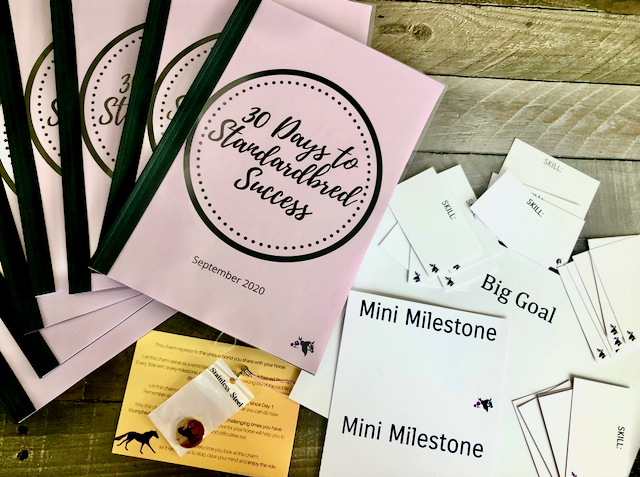
I also didn’t think about the new skills my horse would need to learn in order to reach these goals.
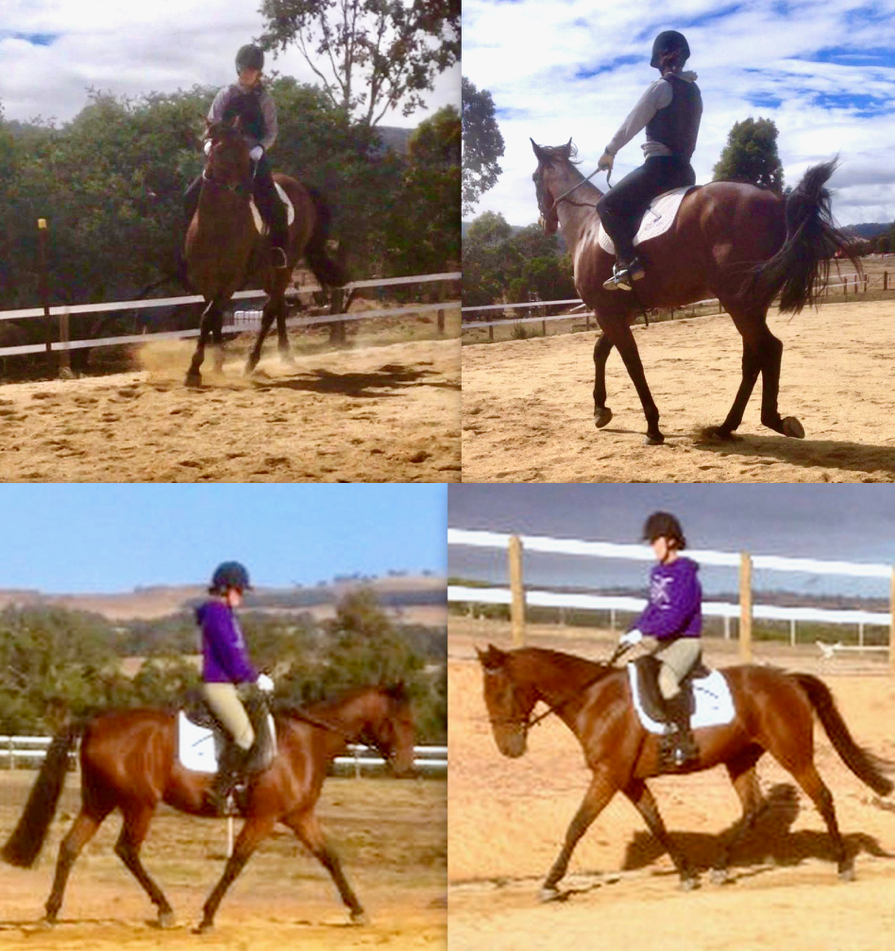
There was no planning out the activities I could do with my horse to help them to physically recondition from pulling sulkies at speed, to supporting the weight of a rider and moving their body in completely new ways!
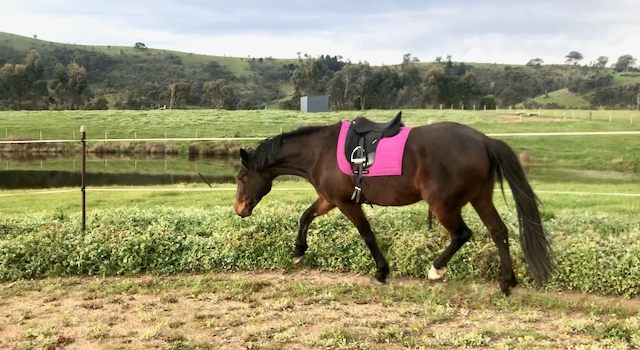
I didn’t realise in those early days just how much harder I was making things for myself and my standardbreds in the long run.
Standardbred rehabilitation has many benefits
The goal of harness racing is for the horse to pull their sulky as fast as possible.
This is often achieved with the horse moving with a high neck and head carriage, which is quite the opposite of how we want our riding horses to carry themselves.
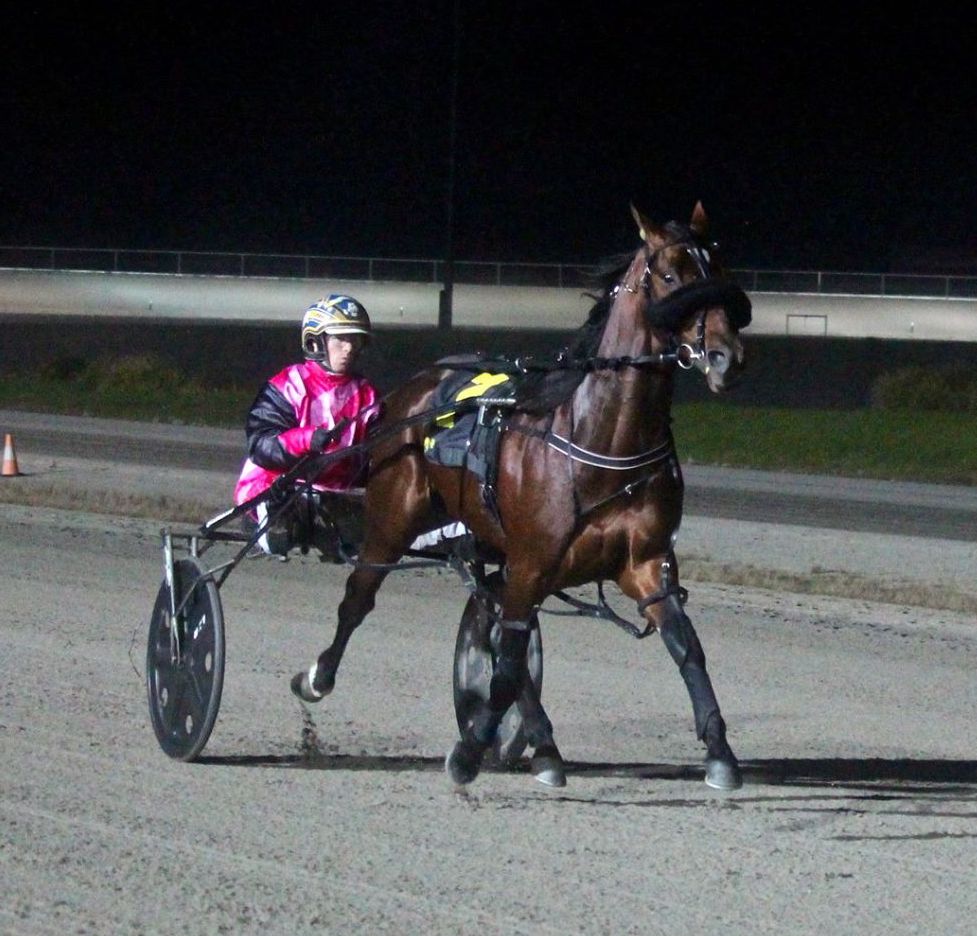
Your standardbred may have leaned into pieces of their harness racing gear when working.
Once this gear is removed, your horse will need to learn to balance themselves.
Without this independent sense of balance, your standardbred may stumble and be unable to turn the corners of the arena without jarring themselves.
Running with their heads held high helps the horse to condition so that they have strong, ‘under’ muscles (particularly on their necks). But the horse can also be a little weak across the back, from a hollowed frame.
Without strength and developing your standardbred’s topline muscles which run along their spine, your standardbred will struggle to carry you comfortably.
As we will discuss in detail a little later in this article, harness racehorses don’t do a lot of bending and flexing from side to side whilst training in cart.
This can lead to the horse being quite straight and stiff to turn.
Without increasing their suppleness, your standardbred won’t be able to bend their body around small riding spaces, change direction and may drift and pull you out on circles.
Ethical standardbred retraining is mindful of all of the preparation training needed to make the shift from racing to riding.
Without taking the time to work with your horse through this rehabilitation process, you’re inviting confusion, possible soundness issues, poor habits and an inability to move past basic skills into your standardbred retraining journey.
Here are some of my favourite activities for reconditioning a standardbred to ride:
Poles
Poles are a fantastic training tool for the off the track standardbred.
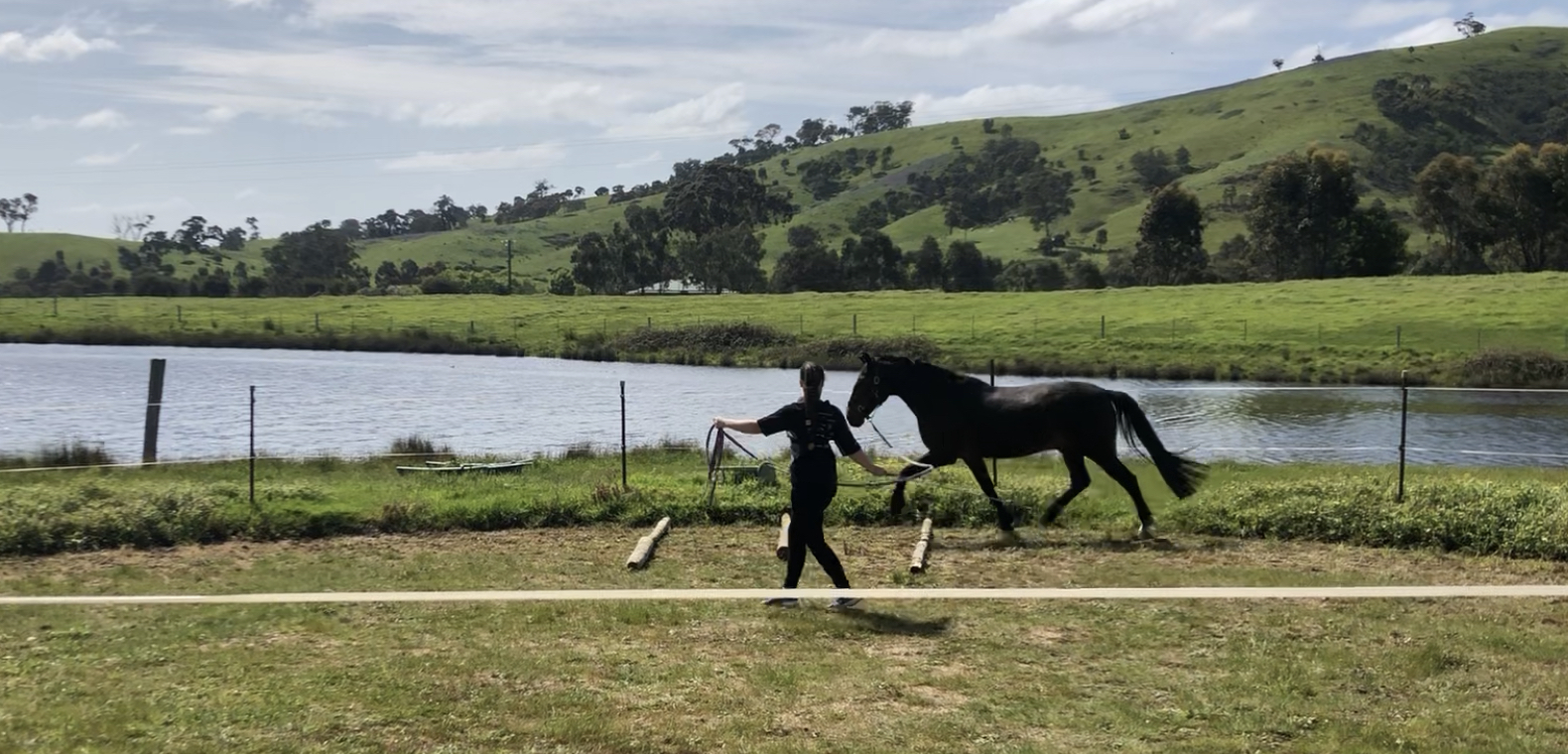
Working over poles will help the horse to learn entirely new concepts, such as how to adjust their stride length within the same gait.
This is new to standardbreds, as harness racehorses have very little understanding of how to go longer, shorter, faster or slower without breaking into the next ‘gear’ (i.e. moving from walk to trot, rather than a longer/faster walk).
By rolling the poles closer together you teach your standardbred to snap up their legs and create a shorter stride length.
By rolling the poles further apart, your standardbred will need to stretch out and go longer in their stride (but not necessarily faster).
These skills not only help to prepare the horse for ridden skills, but the variances in posture and the way the horse carries itself also aids the reconditioning process.
Working your standardbred over poles can help your horse to develop their topline muscles, which creates a strong platform to bear the weight of the rider comfortably.
Poles can be set on curved lines, circles, raised and used in other very clever ways, to achieve different training and rehabilitation outcomes.
We talk in detail about how to set up poles activities in our Standardbred Groundwork Workshop.
Topics covered in the Trot Poles for Standardbreds module include:
- How to measure trot poles
- How to get your standardbred to work confidently over poles
- How to set up a range of different poles exercises for standardbred rehabilitation
You can learn more by clicking HERE
Cones
Harness racehorses wear pieces of gear which restrict the amount of bend the horse can achieve through its body and neck.
Straightness creates optimal efficiency and speed whilst pulling a sulky.
If you watch a harness racehorse turn in cart, they step out like a sprinkler.
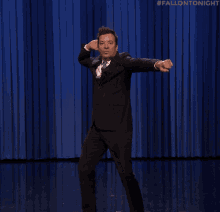
A horse turning with a sulky attached will lead out from its shoulder, keep its back legs grounded as a pivot point and its head should swing around as the last part of the straight line its body makes.
The problem for us riders is that when we take on a retired harness racehorse, they often have become very familiar, comfortable and conditioned to work with straightness through their body.
We expect our standardbreds to come into small arenas or tiny riding paddocks (when compared to the size of a racetrack) and to bend their bodies around corners and tight directional changes.
This is such a huge ask for the horse and incredibly challenging, physically.
You can prepare your standardbred to feel comfortable with this new way of moving, by doing some specific exercises to focus on bend and suppleness.
Activities like walking around/through a line of cones (or upturned buckets; whatever you can find) can teach your standardbred how to bend from their ribcage and lead around a corner with their nose first.
We often take simple skills like this for granted.
It’s not until we’re working with a standardbred who can really struggle, that we realise how much we’re asking of them (and how unfair this can be, without preparation).
Again, our Standardbred Groundwork Workshop walk you through some of the specifics of cones exercises (the module on cones is just 1 out of 25 lectures included in this super value $29 program!)
Stretches
Now that we have a better understanding of the shape of a harness racehorse and how differently they move and are muscled when compared to riding horses, we can understand why they’re so stiff.
Racing standardbreds have never been asked to bend before.
It’s a bit like asking a human who has never done yoga or stretching exercises before to drop into the splits… yikes!
But by doing a little bit of flexibility training each day, those splits won’t seem so impossible (or painful!)
It’s the same with horses; we need to steadily increase their flexibility over time and with steady training.
There are a very specific range of exercises which are designed to support the retired harness racehorse to transition to riding partner.
These include neck stretches, ‘over the back and down’ stretches, crossing the midline lateral stretches and even stretches using the horse’s legs to increase mobility through the joints.
It’s important if you’re considering stretching your standardbred to know exactly how to do these exercises safely.
Overstretching horses is very common in the equestrian world and it can lead to injuries.
That’s why we’ve left the coaching stretches for standardbreds to the experts.
Several of Australia’s leading equine physical health practitioners have generosity shared their wisdom via our Standardbred Body & Mind Workshop.
If you’d love to deep dive into setting your standardbred up for long-term soundness post-racing, and learn all of the best tips and exercises for optimising their performance as a riding partner, the Standradbred Body & Mind Workshop is perfect for you! Learn more by clicking here.




